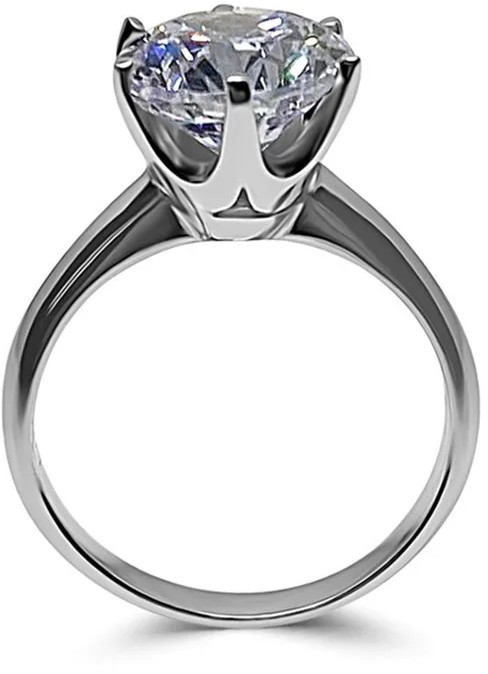As cheap diamond replacements, cubic zirconia (CZ) and moissanite have become popular gemstones. Both jewels are bright and shiny, but they look different. This article will explain the small differences between cubic zirconia vs moissanite to assist shoppers choose the right stone for their jewelry.
Cubic Zirconia: Sparkling Copy
CZ and moissanite are lab-made gemstones with different properties. CZ, made of zirconium dioxide, is heated and crystallized to achieve its diamond-like look and affordability. However, moissanite, a lab-synthesized mineral, is brilliant and durable. CZ’s perfect beauty and adaptability rival diamonds, while moissanite’s twofold refraction and resistance to discoloration set it apart. Understanding cubic zirconia vs. moissanite helps people choose alternatives to diamonds based on their preferences and lifestyle.
Cubic Zirconia Appearance
Cubic zirconia sparkles like diamonds. Colorless variations resemble high-quality diamonds’ stunning white hues. Smart observers may detect that CZ has more fire, or light dispersion into spectrum hues. Cubic zirconia may look different than diamonds due to this color play. Cubic zirconia appear perfect. CZ has few obvious imperfections or blemishes, unlike diamonds and moissanite. This clarity makes the stone appear immaculate from afar.
Cubic Zirconia Durability
In the comparison between cubic zirconia vs moissanite, cubic zirconia is the better choice, but it doesn’t last as long. CZ is very bright and shiny, but because it is made of softer materials, it scratches and wears away easily, so it’s not good for daily use. This flaw is especially noticeable for engagement rings, which are worn all the time and are exposed to everyday things. However, moissanite is more durable than diamond, so even though it isn’t as bright, it’s a better choice for jewelry that will be worn often.
Moissanite: The Rival Shine
Nobel Prize-winning chemist Dr. Henri Moissan discovered moissanite, a silicon carbide mineral, in 1893. Moissanite is found in nature, but lab-created stones ensure quality and ethical sourcing.
Moissanite Appearance
Moissanite is a popular diamond replacement because to its brilliance and fire. High refractive index and optical qualities provide a stunning light show. Moissanite resembles diamonds, but its double refraction gives it slight variances. Moissanite sparkles without a yellowish tint, unlike some diamonds.
Moissanite Durability
Moissanite is more durable than cubic zirconia, making it better for everyday jewelry. Moissanite is second only to diamonds on the Mohs scale of hardness, which evaluates scratch resistance. Moissanite is ideal for engagement rings, earrings, and other daily-wear jewelry due to its extreme hardness.
Cubic Zirconia vs. Moissanite
The choice of cubic zirconia vs. moissanite, depends on personal preference, budget, and jewelry use. Cubic zirconia delivers diamond-like looks at a lower cost. For occasional wear and exceptional occasions, its brilliance and immaculate appearance make it appealing.
Moissanite is for people who want affordability and durability. Moissanite is ideal for everyday use and may be a magnificent centrepiece in engagement rings and other regularly worn pieces due to its hardness, discoloration resistance, and captivating brilliance.
Conclusion
Each gemstone, cubic zirconia and moissanite, has its own appeal. Moissanite shines and lasts longer than cubic zirconia, which is affordable and flawless. Understanding the small distinctions in cubic zirconia vs. moissanite looks helps people choose gemstones that fit their preferences and lifestyle. Both diamonds give a stunning voyage into inexpensive luxury, whether embellishing a memorable occasion or symbolizing eternal love.








